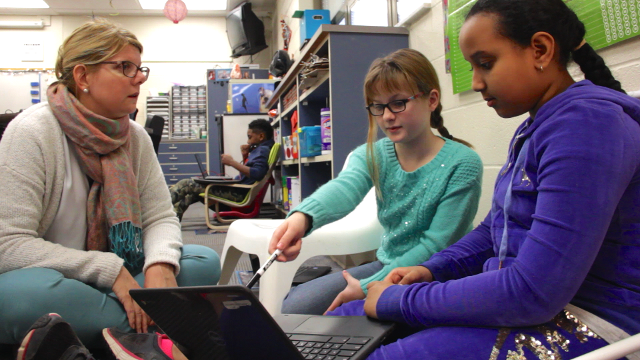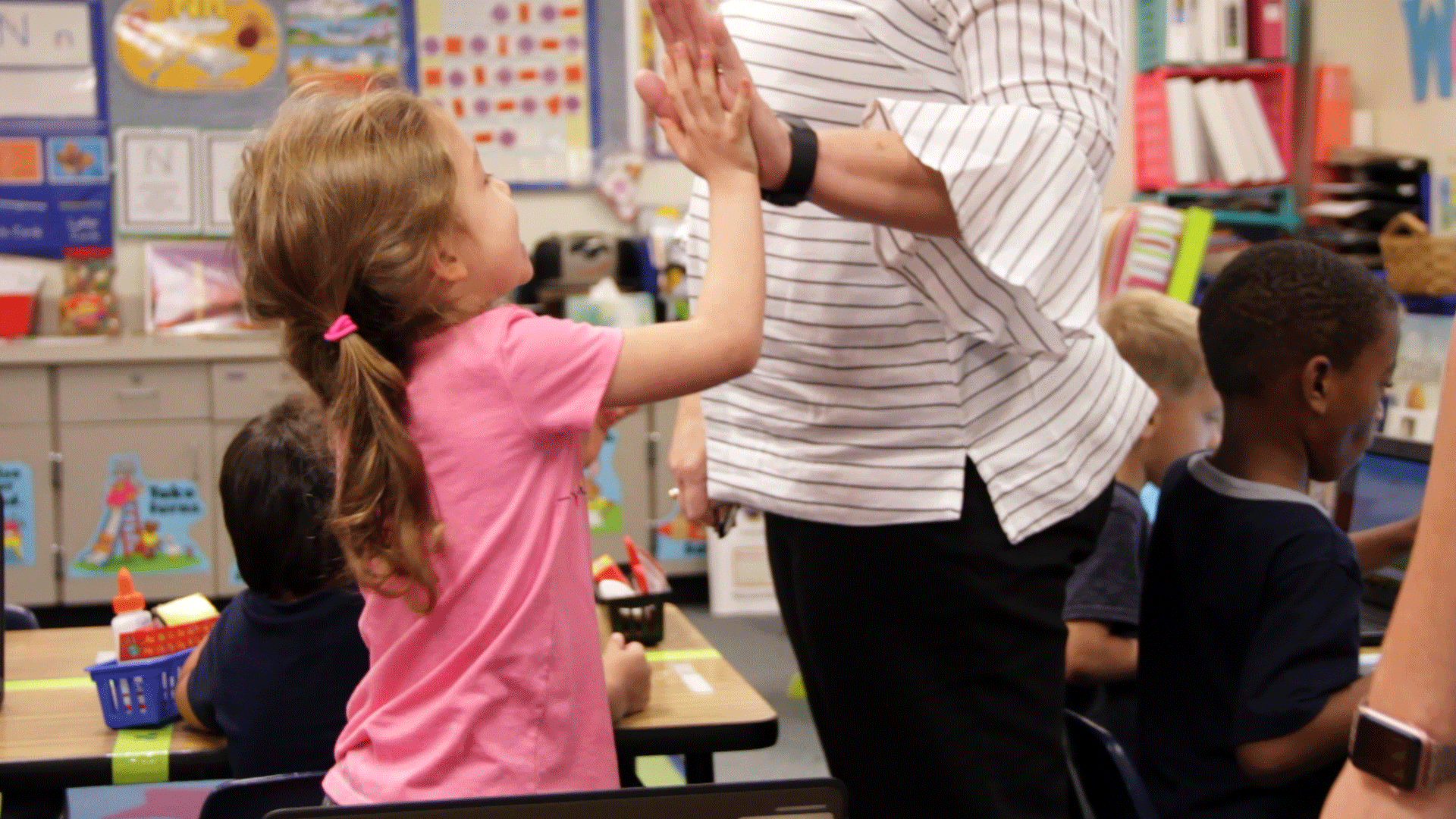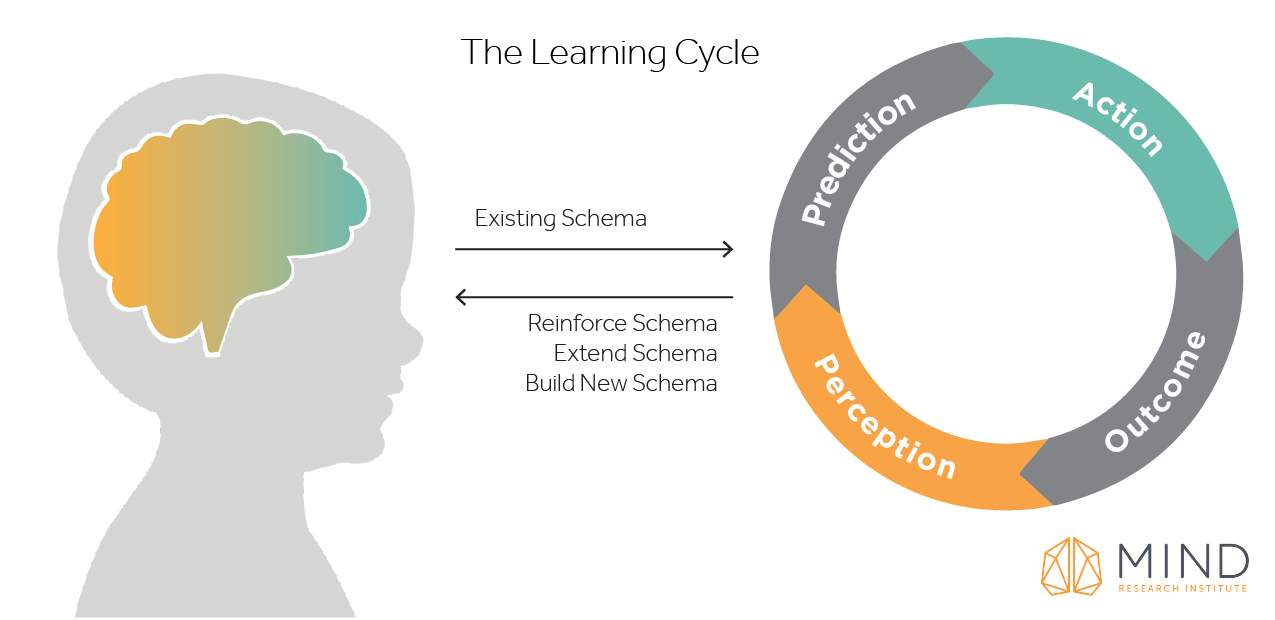
Growth mindset is a term we hear a lot, but what does it actually mean?
Psychologist and Stanford University researcher Carol Dweck, has shared that students who have adopted a growth mindset believe that hard work, perseverance, and learning from mistakes give them the ability to learn and continually develop their knowledge and skills. Students with fixed mindsets believe that learning is based on the intelligence that they already possess and that intelligence is unchangeable.
Imagine what this looks like in classrooms all across the country. A fourth-grade student with a fixed mindset approaches mathematics very differently than one with a growth mindset. The student with a fixed mindset searches for confirmation of their beliefs in their own intelligence. This comes from correct answers in class, good grades on assignments, and positive affirmations about their intelligence (eg., You are so smart! Good job as always!) from the adults in their life.
When the student with a fixed mindset is doing well, their belief in their intelligence is reinforced. What happens when these students struggle?

If doing well confirms “smartness,” then failing causes the student with a fixed mindset to question their intelligence. For this student, every low test score, every wrong answer, every time they find themselves struggling, serves as proof they have reached the limits of their mathematics potential.
Failure becomes a period at the end of their growth. Their mindset is fixed. This mindset is easily recognized in any student who has ever said to their teacher “I used to be good at math until…”
“Until” might stand for a specific grade level, concept, or math experience. These students are often disengaged, afraid to take risks, struggle with math anxiety, and lack perseverance simply because they believe they can’t do math.
A lot of scientific evidence suggests that the difference between those who succeed and those who don’t is not the brains they were born with, but their approach to life, the messages they receive about their potential, and the opportunities they have to learn (Boaler & Dweck, 2015, p.5).
A lot of scientific evidence suggests that the difference between those who succeed and those who don't is not the brains they were born with, but their approach to life, the messages they receive about their potential, and the opportunities they have to learn.
In other words, everyone is capable of learning mathematics when given the opportunity and experiences that send the message, “You can do this!”
In fact, one of the findings cited in the National Mathematics Panel Advisory report states that, “Children’s goals and beliefs about learning are related to their mathematics performance...When children believe that their efforts to learn make them ‘smarter,’ they show greater persistence in mathematics learning" (National Mathematics Advisory Panel, 2008, p.20).
Children's goals and beliefs about learning are related to their mathematics performance...When children believe that their efforts to learn make them ‘smarter,’ they show greater persistence in mathematics learning.
The question we need to ask ourselves is how do we design environments and math opportunities that move students with a “fixed” mindset to adopt a “growth” mindset?
How do we empower students to understand that they can get smarter by learning that their failures can be stepping stones to learning?

At MIND Research Institute, we believe that all students have the potential to deeply understand and truly love mathematics. Brain research tells us students learn by doing. They need to be given the opportunity to engage in meaningful content, make predictions, test those predictions, receive immediate, informative feedback as a result of their testing, and analyze that information to refine their thinking around the content.
This cycle of learning is known as the perception-action cycle. It is the foundation of our award-winning ST Math program.

As students engage in our ST Math program, they are presented with visual models in a game-based format and must work towards mastery of the content. The focus on mastery creates the opportunity for students to form hypothesis, test, revise, and test again. Every time they employ a strategy in the game, they are given immediate feedback that informs their thinking.
The feedback is unique to the strategy used so every answer, right or wrong, receives informative feedback. When the answer is wrong, the students use what they learned from the feedback to revise their strategies. This continues in a cycle until the student correctly solves the problem.
As they play, students realize their wrong answers don’t stop their learning, but instead lead to more learning. ST Math builds intrinsic motivation and teaches students that they can increase their skills and understanding through application and experience.
Through ST Math, students are learning what Carol Dweck calls the power of YET. They are developing the understanding that getting something wrong is not a “no,” but instead it is a “not yet.” When students do the hard, thinking work, learning happens. It is not something that is “fixed,” but it is something that can be refined, expanded upon, and connected to new thoughts and ideas.
Engaging with content in this manner teaches students that, as Ariana Huffington has said, "Failure is not the opposite of success, it is part of the journey to lasting success."
Failure is not the opposite of success, it is part of the journey to lasting success.
- Ariana Huffington
ST Math and other meaningful experiences that push students to learn from their failures are what helps students develop a growth mindset, inspire confidence, and bring joy to mathematics.

Twana is Vice President of Curriculum and Instruction at MIND Research Institute. Follow her on Twitter @TwanaYoung.
Comment